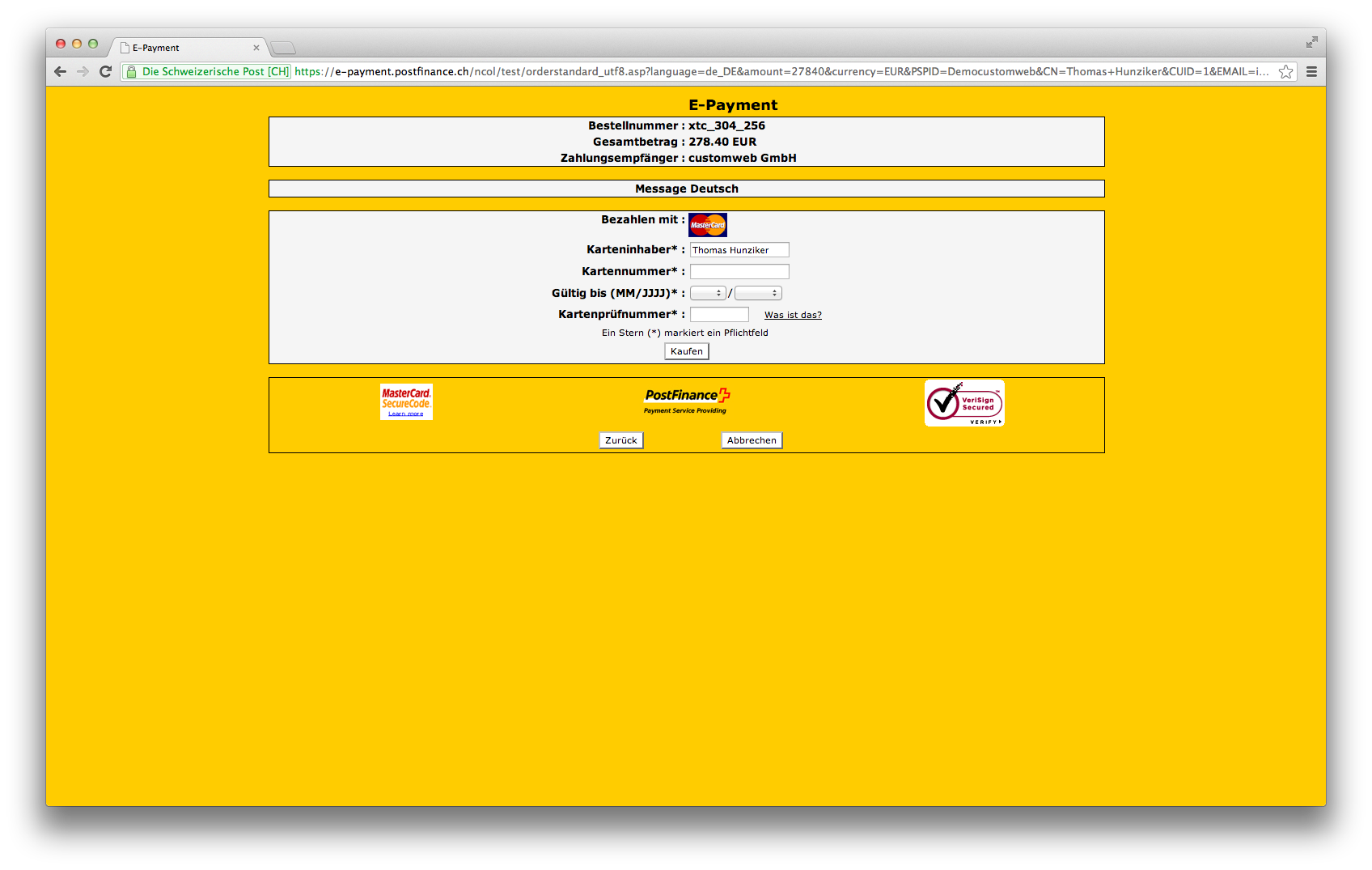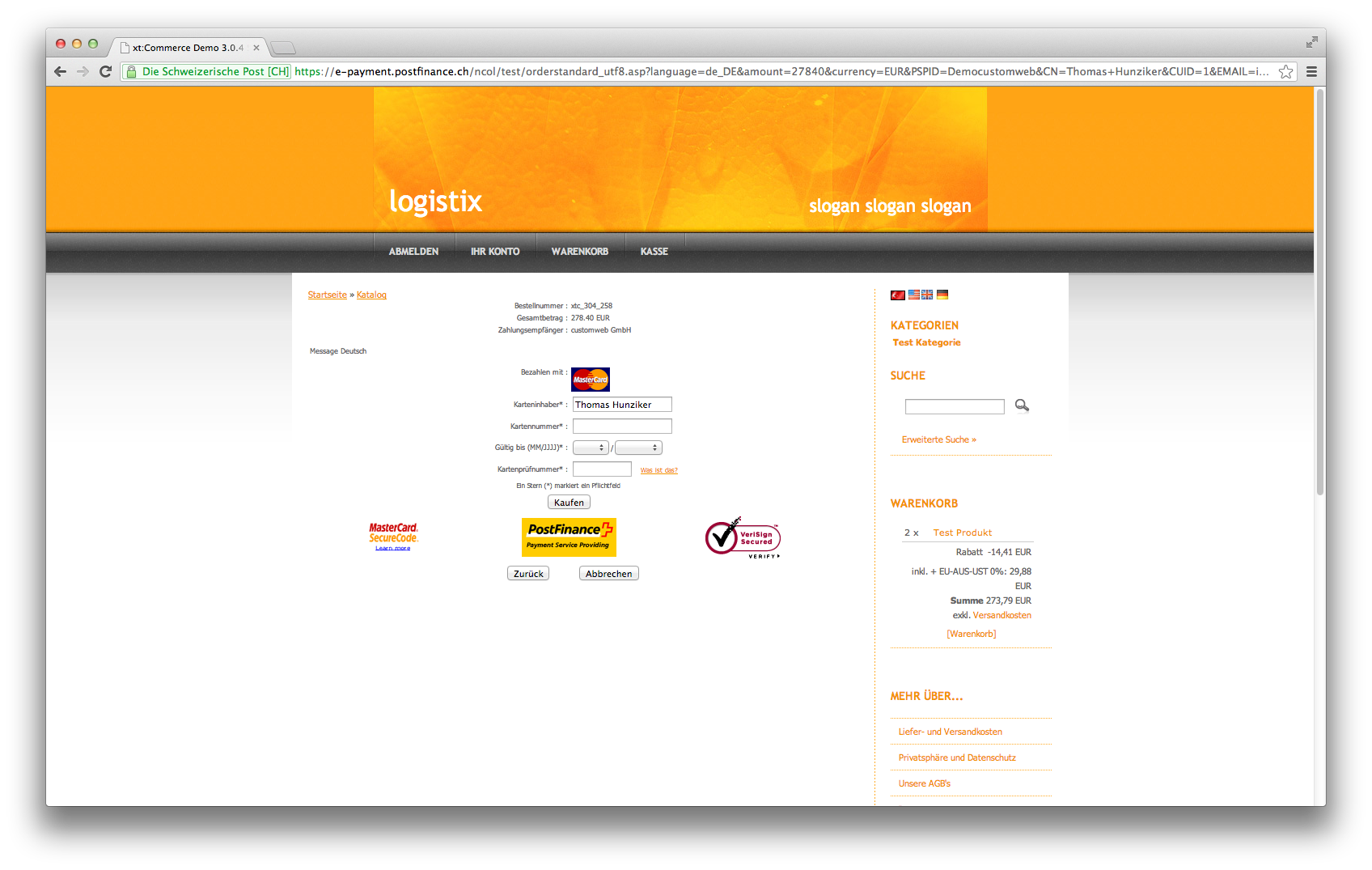The Classical Way of Processing Payments
The Payment Page is the classical authorisation method. After confirming the order in the shop, the customer is directed to the site of the Payment Provider in order to enter his payment information.
Basically, one differentiates between payment processing on externally hosted Payment Pages and self-hosted Payment Pages. The standard case is the externally hosted Page. The payment information is entered within the PCI-certified environment of the Payment Service Provider and no additional certification or security check is therefore necessary.
Standard Payment Page
For the classical Payment Page the payment mask is loaded in the layout of the PSP and the customer is therefore clearly notices that the merchant's shop has been left. The input of the information occurs in an online form on the server of the Payment Service Provider. After having confirmed the payment, the customer is redirected to the merchant's shop and land on the confirmation page with familiar layout.

Dynamic Template
Most Payment Service Provider enable a graphic adjustment of the Payment Page through the Dynamic Template Mode. In this case, the payment mask of the Payment Service Providers is loaded in the design of the merchant's page. The page of the PSP is therefore embedded into the page of the merchant.


